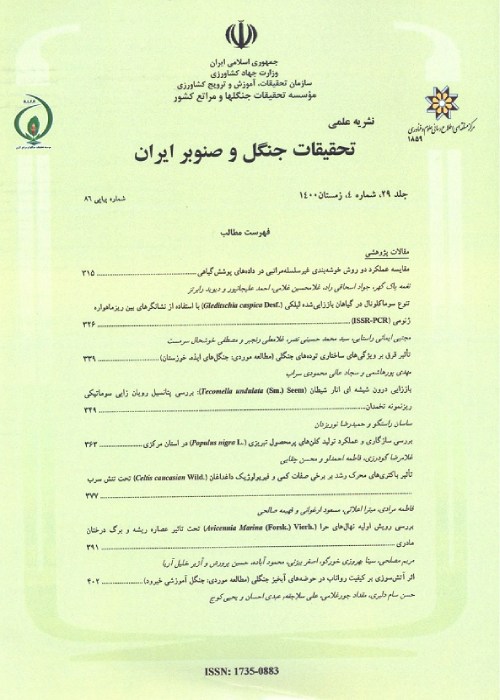Impact of Anthropogenic disturbance on the size diversity of trees in Arasbaran forests (Case study: Hatam-Meshasi Forest Reserve in Meshgin-Shahr county, Iran)
The presence of trees of varying sizes contributes to the creation of diverse and complex forest structures. However, human disturbances can disrupt these structures and negatively impact tree size diversity. This study investigates the effects of human disturbances on tree size diversity in the Arasbaran forests of northwestern Iran. The findings provide valuable insights for managing existing forests under population pressure and diverse land uses, as well as for developing conservation measures that optimize the utilization of limited forest resources.
To assess the impact of human disturbances, three areas with varying disturbance levels were selected based on forest history, observations, and proximity to the primary disturbance source. Within each area, four 1-hectare (100 × 100 m²) sample plots were established. A census of all trees and shrubs was conducted, and their diameter at breast height (DBH; ≥5 cm), height, and species number per hectare were recorded. Tree size characteristics in these areas were quantified using the plotless nearest neighbor method. Three transects were laid parallel and perpendicular to the secondary road in each area, with samples taken at regular 25-meter intervals. Using random-systematic selection, the nearest tree to the sample line was selected as a reference tree, and four neighboring trees were identified. DBH, height, and tree-to-tree distance were measured for each tree. Tree size diversity was analyzed using indices including distance from the nearest neighbor, diameter mean and coefficient of variation, diameter differentiation, height differentiation, Gini coefficient, and Shannon index of tree size diversity. Pearson's correlation test was used to determine the correlation between each tree size diversity index and the disturbance intensity index in the region.
An average of 399 trees and shrubs were recorded per hectare in the study area, with the highest density observed in the low disturbance area. Mean diameter and total tree height were higher in the high disturbance area compared to the low and medium disturbance areas. The distance index from the nearest neighbor was significantly higher in the high disturbance area compared to the other two areas (F=41.49, sig<0.001). The coefficient of diameter variation was also significantly higher in the low disturbance area compared to the other two areas (F=17.11, sig<0.001). There was a significant negative correlation (r=-0.682, sig<0.001) between the coefficient of diameter variations and the disturbance intensity index. Average DBH was higher in the high disturbance area, but the difference between the three areas was not significant (F=1.06, sig=0.356). The Gini coefficient index was significantly higher in the low disturbance area compared to the other two areas (F=17.89, si <0.001). Tree diameter differentiation was also significantly higher in the low disturbance area compared to the other two areas (F=13.86, sig<0.001).
Human disturbances negatively impact tree size diversity and forest stand structure, leading to reduced structural complexity. Mitigation strategies and protection plans are recommended to address human-caused disturbances in areas lacking size diversity. Planting pioneer trees can enrich structural complexity. Additionally, a conservation plan tailored to habitat conditions is required to promote size diversity and enhance forest resilience. Local organizations should prioritize this plan.
- حق عضویت دریافتی صرف حمایت از نشریات عضو و نگهداری، تکمیل و توسعه مگیران میشود.
- پرداخت حق اشتراک و دانلود مقالات اجازه بازنشر آن در سایر رسانههای چاپی و دیجیتال را به کاربر نمیدهد.



